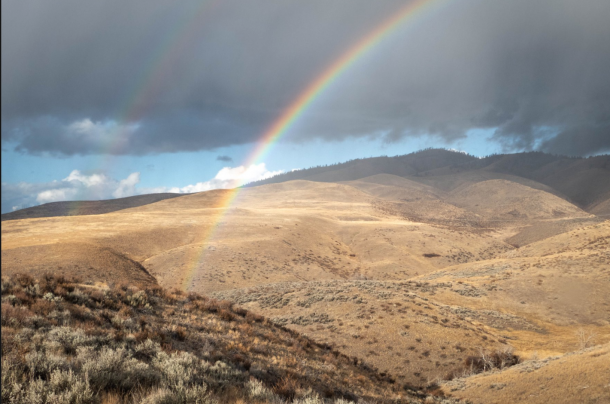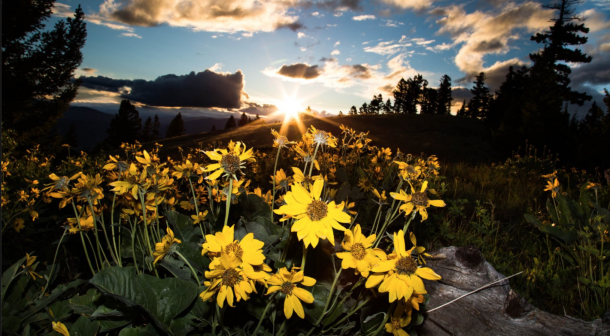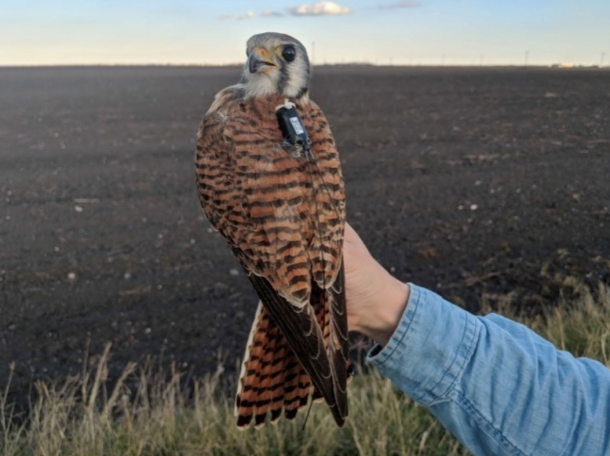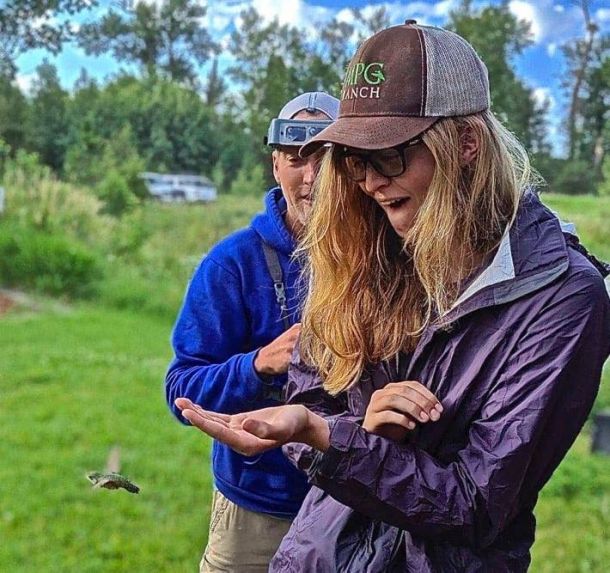The NATURE short film “Inside Montana’s Living Laboratory” features the tireless employees and volunteers working at MPG Ranch, a large conservation property in Western Montana that doubles as a research and education center. NATURE spoke with Joshua Lisbon, Education & Community Outreach Manager at MPG Ranch, to learn more about their important work.

Photo courtesy of MPG Ranch
Q: Can you describe the work you do at MPG Ranch?
Joshua Lisbon (JL): As Education Director, my work focuses on education, outreach, and mountain lions. I primarily connect the public to our work by offering educational opportunities for volunteers, developing curriculum based on our research for use by educators, running internships for youth, and studying cougars.
As an organization, we study the interconnectedness of life across the 15,000-acre property. Our scientists specialize in restoration and ecology. The health of wildlife and plant populations are some of the central responses we use to gauge our restoration’s success. Some researchers probe the soil for microbes and others track elk herds. There are staff who focus on plants, pollinators, small mammals, reptiles and amphibians. There’s also a whole team who is doing some really fascinating work with birds. Certain species, like some raptors, live on MPG Ranch for only part of the year, so we deploy GPS trackers to map their migration routes. It’s the interplay between our study species and their habitats that guide our restoration and help us uncover the complexities of life at MPG Ranch.

Photo courtesy of MPG Ranch
Q: What are the most important projects you’re working on right now?
JL: This answer will vary depending on which researcher you ask. I would, of course, emphasize the importance of education and inspiring the next generation of conservationists. Mountain lions are animals that fascinate me. They are almost like ghosts on the landscape. It’s a joy and privilege to follow family groups for years to observe their lives without disturbing their behavior.
One of our main focuses is the development and implementation of the best possible practices for ecological restoration. Everything we study informs that goal, so everyone’s research is vital. The hard-earned results of restoration are born from tens of thousands of hours of demanding physical labor. We detail this tedious yet rewarding work on our Habitat Restoration Map. Jeff Clarke writes “Field Notes” about his team’s restoration efforts that can be found on our website. Jeff observes nature with curiosity, so he infuses his writing with fascinating natural history.

Photo courtesy of MPG Ranch
Q: The film shows us several of the incredible species you’ve been able to observe (such as bears and mountain lions) through camera traps. What additional data have you been able to glean about these species through this technology? How has it helped your conservation work?
JL: Camera trapping allows researchers to study behavior without directly influencing that behavior. It has led to numerous incredible observations, like a mountain lion killing a bull elk or a golden eagle intimidating a coyote off a carcass.
We maintain an extensive camera network to track animals and monitor changes to the landscape over the years. For bears and mountain lions, we observe rare social interactions and document family groups over time. The DNA sampling, combined with camera trapping, allows us to pair imagery to individuals. We also use camera traps for eagle and scavenger studies to observe how different species use food resources. This technology is exciting because it’s inexpensive, easy to deploy, and offers glimpses of animal behavior rarely, or never before, seen first hand.

Photo courtesy of MPG Ranch
Q: What is your vision of the future? What do you hope MPG Ranch will be ten years from now?
JL: We’ll continue to restore habitat based on what we learn from our experiments and what others have found successful. Our goal is to be doing what we are doing right now, but with a greater understanding of the complex relationships between flora, fauna, and below ground communities. By combining our research with outreach, we aim to develop paths that others can follow to create wild spaces across the West, and possibly around the globe.

Photo courtesy of MPG Ranch
Q: If people are interested in helping with your efforts, what are some ways they can get involved?
JL: If you live in western Montana and want to learn more, you can schedule a tour to see our work firsthand (once it’s safe to have groups together again). For those who can’t visit, we have a web page (www.mpgranch.com) that provides updates on our restoration, the locations of raptors we’re studying, and images from our game cameras. The cameras allow the public to observe wildlife in near real-time. We share some of our favorite photos and links to new content on the MPG Wildlife page on Facebook. Many of our staff are talented photographers, and we share their pictures on our Instagram feed.
But some of the most rewarding work people can do is to get excited about the natural world where they live. We are lucky to have a great natural history center in Missoula. They published a fantastic blog post earlier this spring about online naturalist resources and citizen science initiatives.
If we have one piece of advice, it would be to go outside and learn the names and stories of plants, trees, birds, or whatever else fascinates you. Curiosity about the world we live in, how it all works, and how everything is delicately interconnected inspires us in the work we do. You can easily share that same excitement of discovery wherever you are.

Photo courtesy of MPG Ranch
